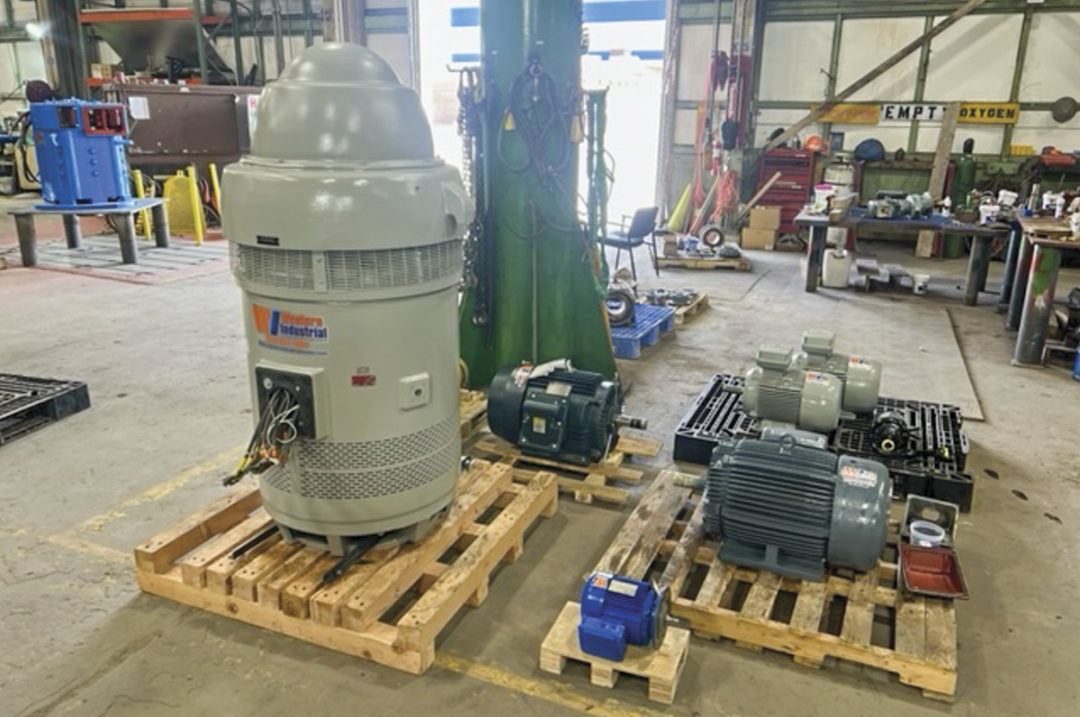It’s that time of year again … ag season is getting into full swing. It’s important to make sure the machines that are making you money, and keeping you operational, are in good health. I would like to offer some good practices, checks and tips that can be done to limit equipment failures and downtime.
General maintenance
One highly overlooked item from maintenance teams is tracking. Try and keep track of when a machine went into service and how many operating hours are on it. Taking a machine into your service shop for a basic maintenance interval (we call it reconditioning) on a set schedule will make the difference between a simple clean-up, new bearings and clearance checks versus a potential catastrophic failure.
We see many times a year where a $100 bearing that failed cost the customer a rewind and sometimes even non-repairable bore damage inside the motor. Had the customer not run the motor to complete failure, they would have had much less downtime and overall cost involved.
A good maintenance team should be able to monitor which machines should be getting pulled after the work season and sent in for reconditioning so they are ready to go next season.
There are a few simple tools that can be used to log your machine’s running condition and help gauge when you may want to have a third party come and do a more in-depth condition check. A temperature logging device, a vibration meter and a log to record lubrication intervals are easy for a maintenance team to utilize and easily trend the typical running conditions of your machines.
There are no perfect guidelines for temperature or vibration limits for a machine, especially in ag applications. There are highly varying mounting positions, covers, locations, conditions, etc. Logging machines individually lets you gauge when that specific machine is starting to get hotter, starts to vibrate more or any other conditions change. These three things will give you all the information you need to track a machine’s health.
Temperature
Every 10 degrees hotter that your motor runs over its rated temp rise becomes detrimental to the winding insulation system. When temperatures trend higher over time, there are many factors to be considered. Your winding vents inside the motor may be starting to get blocked or clogged. There may be a mouse or flying insect vacation resort being constructed inside the motor, or just general mud and dust may have built up enough to make the internal fans in the motor less effective.
Temp rise may also be the start of a mechanical failure. Bearings that are in the start of a failure pattern will start to build more heat, as well as rust, scale or corrosion that may be taking up a tight clearance area of mechanical parts and creating a rub. Make sure and mark a spot to take the temperature in the same location every time (ideally near each bearing). You can also visually check your screens and covers for obvious blockages and keep them cleared out.
Vibration
Logging vibration will tell you a lot about the condition of the machine. When vibration starts to rise, it can show evidence of excessive bearing wear, loss of ideal clearances, the start of a mechanical failure, a lost balance weight or damaged and corroded rotating parts. When vibration becomes excessive, it affects the bearings, bearing fits, wear rings, etc. All of these can lead to a catastrophic failure if left alone.
Make sure you mark a location to log the vibration in the exact same area (typically at the upper bearing, lower bearing, top of volute housing or on the pump bearing chamber if equipped).
Lubrication reporting
Making sure your machines are regularly greased or oils changed is the tedious, yet very important part of the machine’s life. Making sure the maintenance team documents the intervals will ensure that you aren’t pushing the lubrication products beyond their effective lifespan.
Mixing bearing greases is a bad practice for maintenance teams. Make sure they are provided clearly marked grease guns, with the correct products for each application. Some grease will not mix well and will lead to bearing failure, excessive heat, poor range of temperature protection for the bearings or create other problems.
Most new electric motors will use Mobil Polyrex EM grease, as do most bearing manufacturers that your service center will be installing in your machines. Make sure to keep this on hand, and do not mix this with any other grease. Make sure your vertical motors are using the oil specified by the manufacturer for the temperature ranges that you plan to use the motor in. These can vary depending on the type of bearing used in that machine, how much load it will see or how the load is supported or applied.
All of these conditions can be addressed when your machine goes in for reconditioning at your service center and should be well documented when you get your final machine reports. If you are not ready to pull the machine, or suspect that your issue may not be detrimental, utilize a well-qualified service center to come out and do a vibration analysis on that machine. This uses advanced technology to tell you what is causing the vibration all the way down to mechanical wear, bearing failure, electrical harmonics, out of balance and more.
You can always reach out to your service center for services provided on-site, if your team has enough on their plate as it is. Many shops offer springtime maintenance service, vibration analysis, laser alignments, on-site balancing, consulting and more, and would be happy to help.








